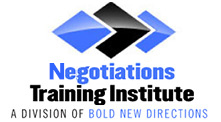It can certainly be a little nerve-wracking to walk into a sales meeting. Making the sale is your top priority but how do you go about making that happen? You might walk in and try to engage in some awkward conversation to break the ice, but clients are far too busy to waste time chit-chatting. Furthermore, they can spot a cheesy salesman a mile away and will avoid you at all costs. The most important thing to remember when beginning a sales meeting is that you want to maintain control. You don’t want to let your client start calling the shots and telling you things like “let’s get this started.” Rather, you want to appear calm, confident, and in control.
Step 1: Set the Tone
As soon as you walk into the sales meeting you want to set a positive tone. You can do this by saying something positive such as “wow, what a great office!” or “I love this part of town.” Say anything that feels comfortable, as long as it’s something positive. At this point, it’s easy for the prospect to try and take over by saying something like, “Well let’s have a seat and talk about this product.” You politely acknowledge them and remember that you are in control. They are trying to commoditize you, but you have to make yourself human and continuing a little positive talk is the first step in humanizing yourself. Continue by saying at least one sentence that is unrelated to business. For example, you might casually make mention of your football team’s recent win or how wonderful the weather has been lately. The idea is to make yourself appear human. It’s easy to dismiss a sales rep but it’s not easy to dismiss a human.
Step 2: Ask the Right Questions
It can be so tempting to jump right in and start talking about how great your product or service is. However, it only sounds great to someone who needs it? Therefore, you have to find out what your client’s needs are before you can begin your pitch. Ask open-ended questions such as:
- “What kinds of problems are you experiencing?”
- “What are you hoping to get out of this product?”
- “Have you ever used this product (or service) before?”
- “What was your experience with it, both good and bad?”
The more information you gather, the more insight you will have to what is motivating your client. Once you can identify their specific needs, you can tailor your presentation to focus solely on those specific areas.
Step 3: Let Them Know They Have a Problem
Oftentimes a client is reaching out to you because they are experiencing a problem and they are hoping that your product or service can help them solve that problem. Sometimes, however, you might encounter a client who thinks that everything is fine. This is your biggest competitor. How do you sell something to someone who doesn’t know they need it? In this case, you need to focus the meeting on your client’s problem. For example, if you were selling sales training courses you might begin by saying, “Did you know that nearly 95% of the people working for you got into sales accidentally and it was not their first choice? There are far more aspiring firefighters, police officers, or web designers. It’s important to implement sales training that teaches the skills needed to seek wonderful opportunities, even if it wasn’t the first choice for a career.” This will definitely capture the attention of your client and leave them pondering about this potential problem.
The first few minutes of a sales meeting are incredibly important. You don’t have much time so you want to get in and set the tone right away. A positive attitude and warm conversations give the client an opportunity to see you as a person and not just a sales rep. Asking questions will also make the client feel like you are listening to their needs and actually care. Finally, defining the problem will give you an opportunity to offer solutions. Control the meeting by controlling its focus the entire time and you are more likely to land the sale.
